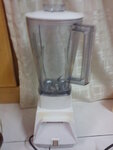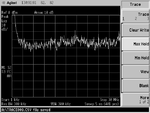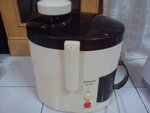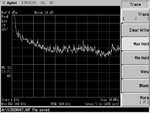ernest_ckl
Newbie level 4
Electrical Appliance Signature Identification by using RF method
Hey, I am doing my FYP project with a topic of Electrical Appliance signature identification by using RF method!
Every electrical appliances emits it's own and unique signal when it consumed energy. I would like to capture and record the signature of electrical appliances This project is more towards signal processing where the recorded signature will be processed and analysed to be used with classifiers to classify the source of the signal which is hope in turn will identify the appliance being used.
The active loop antenna was connected with spectrum analyzer.
The antenna was used to measured the signal emitted from a blender.
so far, I am able to capture the waveform of blender by using spectrum analyzer !
For the signal analysis and classification of the appliance, what is the next step or method that I can used to analyse the waveform from the spectrum analyzer?
For the electrical appliances identification, is it the fuzzy logic or neural network need to be used?
Any expect here can give me some help???? Thanks a lot
Hey, I am doing my FYP project with a topic of Electrical Appliance signature identification by using RF method!
Every electrical appliances emits it's own and unique signal when it consumed energy. I would like to capture and record the signature of electrical appliances This project is more towards signal processing where the recorded signature will be processed and analysed to be used with classifiers to classify the source of the signal which is hope in turn will identify the appliance being used.
The active loop antenna was connected with spectrum analyzer.
The antenna was used to measured the signal emitted from a blender.
so far, I am able to capture the waveform of blender by using spectrum analyzer !
For the signal analysis and classification of the appliance, what is the next step or method that I can used to analyse the waveform from the spectrum analyzer?
For the electrical appliances identification, is it the fuzzy logic or neural network need to be used?
Any expect here can give me some help???? Thanks a lot
Last edited:



